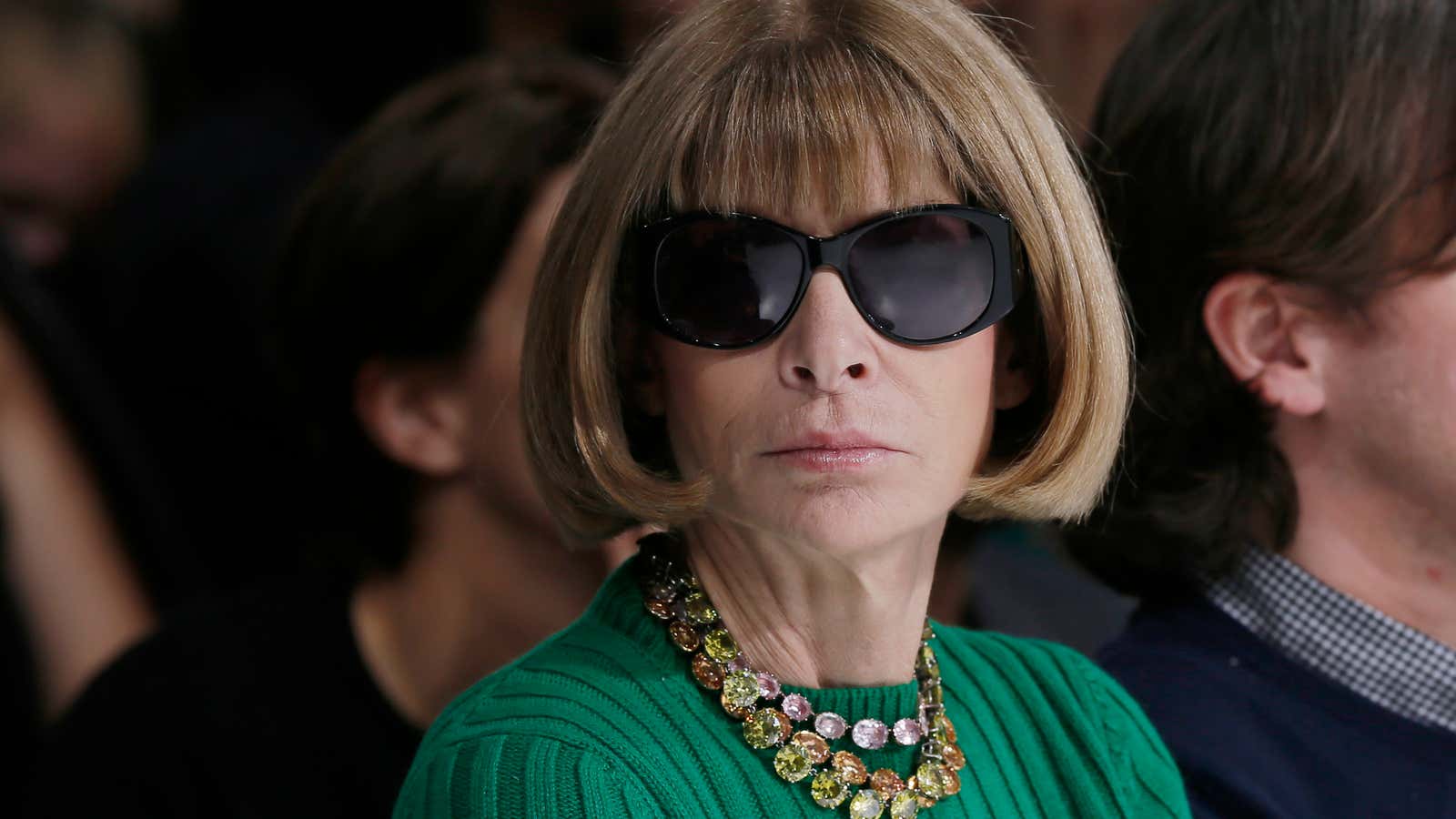On April 2, Page Six reported rumors that Anna Wintour, Vogue’s omnipotent editor-in-chief and Condé Nast’s artistic director, would be stepping down after closing the magazine’s September 2018 issue—a claim which Condé Nast later “emphatically” denied. The Page Six writers (three of them) also dared to suggest that Wintour would be replaced. By whom is almost irrelevant, though Page Six floated the name of British Vogue’s new editor-in-chief Edward Enninful.
With all due respect to Enninful, Wintour will never be replaced—by him or anyone else. The power she amassed at Vogue’s helm—the cultural, financial, and political clout—is no longer possible for a leading editor of a print publication, no matter how talented, decisive, connected, or scary they may be.
When Wintour took the reins at Vogue in 1988, print magazines were the primary outlet for lovers of fashion to view their favorite designers’ collections. If their editors didn’t deem a designer’s work worth seeing, well, readers didn’t see it. And while of course there were magazines other than Vogue, it became the industry’s definitive style bible—capable of making a designer’s career—under Wintour’s watch. Designers famously consulted her before debuting their collections, and her approval was paramount.
Another way for a fashion label to get into Vogue’s pages was to buy them for advertisements, the quantity of which was often touted as a measurement of the magazine’s health. September issues are the most important for fashion magazines and Vogue’s was often thicker than a dictionary—not to mention its competitors’—with ad pages. In 2007, Vogue’s September issue boasted 727 ad pages, a record it still hasn’t managed to beat a decade later.
In addition to being a measure of the magazine’s success, the 2007 September issue was the subject of a wonderful documentary, that captured Wintour’s cultural hegemony just before social media completely blew the doors off the once cosseted world of fashion. For years, Wintour was famously inscrutable—she made headlines simply by smiling! Today, media attention is far easier to garner: We see designers’ inspiration boards on Instagram, and curate our own feeds. And increasingly, Vogue’s covers reflect those who wield the most power on social media rather than in film or fashion. Kendall Jenner is on the current cover—her third since 2016.
Beyond the magazine, Wintour became a cultural and political force that remains unrivaled in the industry. She was one of president Barack Obama’s biggest fund-raisers and has a wing named for her at the Metropolitan Museum of Art. There, the annual gala she hosts for the Met’s Costume Institute is attended by titans of technology, business, Hollywood, sports, music, and fashion, and can handily raise upwards of $10 million for the museum. While today’s rising media stars may command millions of eyeballs on social media, there are few, if any, that marry their influence with access quite like Wintour’s.
Whoever takes over when Wintour steps down—whether that’s this year or not—will be doing so in an entirely new landscape, where neither the position nor the magazine wield the power they once did. The new leader may boast millions of followers, but they’ll never be followed quite like Anna Wintour.
